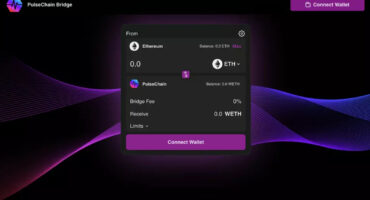Artificial Intelligence & Crypto. Europe
The European Parliament takes action. https://t...

Advanced visual search system powered by Ajax






BNB launches opBNB Testnet. The BNB Chain team has announced the launch of opBNB, a Layer 2 network based on Optimism OP Stack and compatible with the Ethereum Virtual Machine (EVM). The new solution was released on June 19 as a test mode on the BNB Smart Chain (BSC) network.
Start building using the opBNB testnet today! 🏆 https://t.co/5R0Wc2L4R2
— BNB Chain (@BNBCHAIN) June 25, 2023
The primary objective of the project is to provide additional scalability, availability, and security to Binance’s main blockchain network. Currently, BNB Chain processes approximately 2,000 transactions per second at a fee of $0.10 per transaction. Meanwhile, opBNB’s stated performance is over 4,000 transactions per second with an average transaction cost below $0.005.
Furthermore, opBNB will help optimize data availability and cache level, as well as enable concurrent transaction processing. The new L2 protocol has also implemented a fraud-checking scheme to further ensure system reliability.
Therefore, developers are provided with a Remote Procedure Call (RPC) service layer, simplifying the process of technological integration. At the same time, EVM interoperability allows opBNB to interact with smart contracts, networks, and ERC-20 token standards based on Ethereum. All of this enables developers to focus on application development without worrying about the complexities of Layer 2 scaling.
BNB launches opBNB Testnet as a response to the scalability challenge that has hindered widespread adoption of blockchain technology. As a layer 2 chain compatible with the Ethereum Virtual Machine (EVM), opBNB utilizes the Optimism OP Stack to enhance BSC scalability while maintaining affordability and security.
Finally, projects can leverage opBNB’s improved throughput and significantly lower transaction costs, enhancing the user experience for their customers. Additionally, projects that previously struggled with high transaction volumes on BSC can thrive with opBNB’s increased scalability!
A testnet is a dedicated blockchain network designed specifically for testing purposes. It functions as a virtual environment where developers and users can experiment with new features, evaluate smart contracts, and explore various functionalities without involving real or valuable assets.
Testnets replicate the essential capabilities of the mainnet, which is the live or production blockchain network. However, they operate under different rules and parameters. Typically, testnets have their own distinct tokens that hold no monetary value, enabling users to conduct transactions and interact with the network without any financial risks.
The primary purpose of testnets is to provide developers with a secure and controlled space to identify and address potential bugs or vulnerabilities in smart contracts and blockchain protocols before deploying them on the mainnet. Various cryptocurrencies have their own designated testnets, and developers and users can access these testnets through specialized software or tools provided by the cryptocurrency’s development team.
A mainnet refers to the operational blockchain network of a specific cryptocurrency. It is the fully functional version of the blockchain that supports real transactions and involves the use of actual assets and funds.
The mainnet represents the official implementation of the cryptocurrency’s protocol and serves as the live environment, where users can engage in various activities such as peer-to-peer transfers, execution of smart contracts, and other network operations. It operates using real tokens or coins that possess financial value and can be traded, utilized, or held within the cryptocurrency ecosystem.
Unlike testnets or development environments, the mainnet is the publicly accessible network that allows users, investors, and developers to interact with the cryptocurrency’s features and services. Transactions and operations conducted on the mainnet are considered valid and permanent as they are recorded on the official blockchain ledger.
The stability, security, and performance of a mainnet are of utmost importance for the success and credibility of a cryptocurrency. Developers continually strive to improve the mainnet’s functionalities, address any potential vulnerabilities, and ensure its seamless operation. Consequently, it serves as the foundation of the cryptocurrency ecosystem, enabling real-world transactions and fostering user engagement.
In broad terms, scalability refers to the capacity of the underlying blockchain network or platform to handle a larger volume of transactions and users while maintaining optimal performance, security, and cost-effectiveness. In DeFi space, scalability is a pressing issue because popular blockchains like Ethereum have encountered limitations in processing transactions. As the user base and transaction load expand, network congestion, slower confirmation times, and elevated transaction fees become prevalent, hindering user experience and impeding widespread adoption.
To address scalability concerns in crypto and DeFi, various solutions have been proposed and implemented:
Scalability is a vital consideration for DeFi platforms, as it enables them to accommodate increasing numbers of users and transactions. By implementing scalable solutions, these platforms can support growing adoption, expedite transaction speeds, reduce transaction fees, and enhaence overall user experiences.
In short: BNB launches opBNB Testnet, which is an integral part of the thriving BSC ecosystem. Allowing developers and projects to interact with various projects and tokens, including BNB, USDT and future ERC20 tokens supported on opBNB. This integration supports the growth of diverse applications, from gaming dApps to social networks, within an efficient and cost-effective blockchain environment.

The European Parliament takes action. https://t...


DEXTools has just integrated the PulseChain network! &n...